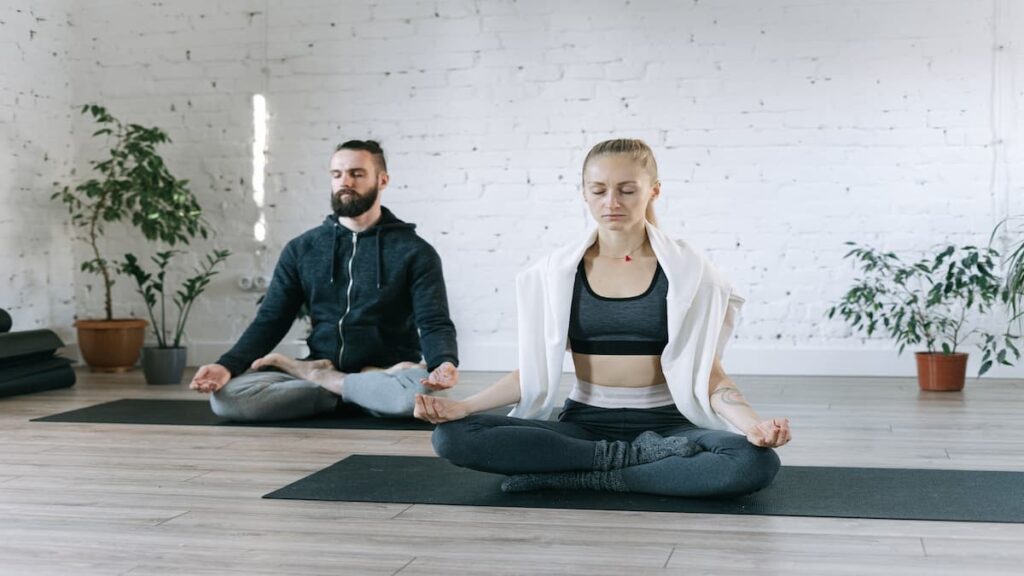Maha Vedha Mudra, also referred to as Maha Bhedha Mudra, stands as a profound yogic practice often denoted as the Yogic Seal or Gesture. Within yoga, a Mudra is a symbolic or ritualistic gesture involving the positioning of the hands, eyes, or other body parts, designed to channel specific outcomes for practitioners. These symbolic movements influence the physical, psychological, and spiritual facets of the individual engaging in the practice.
Maha Vedha, classified as one of the 25 fundamental yoga gestures according to the Gheranda Samhita, an ancient Hatha Yoga text, also holds significance as one of the ten essential Mudras outlined in the Hatha Yoga Pradipika, another classical yoga text from medieval times. As we delve into the exploration of Maha Vedha Mudra, we embark on a comprehensive examination of its practice, uncovering the depths of its impact on the holistic well-being of those who incorporate it into their yogic journey.
Maha Vedha Mudra Meaning
The term Maha Vedha Mudra derives its meaning from the Sanskrit language, where Maha translates to great, Vedha signifies piercing, and Mudra refers to Seal or Gesture. Consequently, the amalgamation of these elements gives rise to the interpretation of Maha Vedha Mudra as the Great Piercing Gesture.
Maha Vedha Mudra Steps
Assume the meditative posture of Padmasana, ensuring mastery of this seated pose for effective practice. The foundation of the practice lies in the perfection of Lotus Pose; hence, it is crucial to attain a comfortable and stable seated position.
Once settled, allow your body to relax, closing your eyes to turn your focus inward. Position the palms of your hands on the floor beside your thighs, establishing a grounded connection with the earth.
With a deliberate and unhurried inhalation through the nostrils, fill your lungs deeply. Hold the breath within, initiating Jalandhara Bandha—the throat lock. Simultaneously, transfer the body’s weight onto the hands, straightening the arms as you gently lift your entire being. During this ascent, rhythmically tap the buttocks on the ground from three to seven times, maintaining a heightened awareness at the Mooladhara, the root chakra.
Once this uplifting sequence is completed, gently lower the buttocks back to the ground. Release the Jalandhara Bandha, sitting in a poised stillness. Exhale slowly and profoundly, allowing a sense of calm to permeate your being.
This entirety constitutes one round. As your breath normalizes, patiently inhale once more, recommencing the sequence. This cyclical process forms the rhythmic cadence of the practice, encouraging a harmonious flow between breath, body, and awareness. Each repetition unfolds as a gateway to self-discovery and inner balance.
Practice Tips
Commence your practice with three rounds in the initial stages. As you gradually acclimate to the nuances of this practice, consider extending the rounds to a maximum of five after a few months. Exercise caution, avoiding excessive rounds to maintain the equilibrium of the practice.
During the rhythmic beating of the buttocks, emphasize a gentle touch. Ensure that both the buttocks and the backs of the thighs make contact with the ground simultaneously. Preserve the integrity of the spine by keeping it straight, and sustain the Jalandhara Bandha throughout this phase. This gentle yet deliberate approach is essential for a harmonious and effective practice.
Upon completing the rounds, transition into a state of quietude. Direct your concentration towards the Mooladhara Chakra, the root energy center, for a few minutes. This contemplative pause allows for the assimilation of the practice’s benefits and encourages a heightened awareness of the foundational energy center.
Maha Vedha Vs Tadan Kriya
Tadan Kriya means Hammering Technique. It is a similar Practice to Maha Vedha. However, Tadana Kriya is an advanced Practice. Breathing should be slow and also it requires the performance of Shambavi Mudra. Yet, there is no need for the Throat Lock. During the practice of Tadan Kriya, imagine breathing in through a long, thin pipe. After tapping the buttocks, exhale and picture the breath spreading in all directions from the Muladhara. Nevertheless, Maha Vedha is a good preparatory practice for Tadan Kriya.
Maha Vedha Mudra Benefits
The benefits of this practice include the following.
- Enhances Pranic Capacity and awakens psychic abilities.
- Relaxes the body and mind.
- Turn the mind inwards and awaken psychic abilities.
- Regulates endocrine systems and maintains hormonal balance.
- Eliminates or lessens the signs of old age.
- Increases the digestive fire.
Conclusion
In conclusion, the profound wisdom embedded in the practice of Hatha Yoga, as illuminated by the Hatha Yoga Pradipika, unveils the interconnectedness of transformative techniques. As stated in the timeless text: Just as an extremely beautiful woman is nothing without a husband, so Maha Mudra and Maha Bandha are unfruitful without Maha Vedha. This poignant analogy underscores the symbiotic relationship among yogic practices. This emphasizes the integral role of this practice in unlocking the full potential of Maha Mudra and Maha Bandha.
Through a disciplined execution, practitioners not only delve into the intricate layers of their physical being but also initiate a journey inward. This awakens latent psychic faculties. The impact extends beyond the dimension of the physical body, reaching the pineal and pituitary glands and harmonizing the entire endocrine system. This meticulous balance, as facilitated by this practice, regulates hormonal secretions and curtails catabolism. Thus, it mitigates or even obliterates the symptoms of aging.
As we navigate the labyrinth of Hatha Yoga, it becomes evident that the synergy among these practices is the key to unlocking their transformative potential. This practice emerges as the essential link, enriching the holistic array of yogic disciplines and reaffirming the truth that its integration is indispensable for the full realization of the benefits offered by Maha Mudra and Maha Bandha. In embracing this holistic approach, practitioners embark on a journey that transcends the physical, leading to a harmonious union of body, mind, and spirit.
